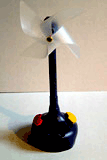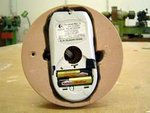HandGriff::Windcraft
Students:
- Jonas Schild (media systems)
- Robert Gerling (media systems)
- Tina Schenk (product design)
The Virtual Blowball
The Virtual Blowball is a small hiscore-game, where the player has to blow all seeds off top of the blowball to score.
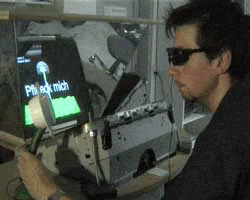
Application
Using the Performer-based VR-System Avango, we implemented a 3D-model of a blowball and animated the seeds in response to the input values. Thus, the stronger the puff, the more seeds get blown away.
The application was run in a "Virtual Showcase" and so enabled the user to see the scene in stereoscopic 3D.
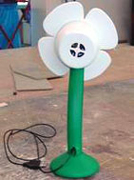
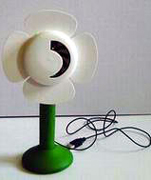
Input Device
We took a small cpu-cooler that was able to produce current by electromagnetic induction and connected it to an A/D-converter. The software received the values via the usb-bus. All this was built into a plastic form that should represent a blowball. To support this prop-effect, we built a switch into the socket's bottom, that was released when the device was taken off the desk. This should simulate plucking a real flower and caused the start and ending of the game.
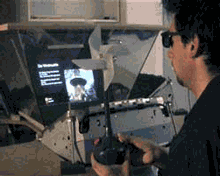
The Virtual Windmill
The Virtual Windmill is an edutainment application. Children are supposed to learn about a windmill and can experience the power of the wind by their own blowing skills. Further background information about the farmer harvesting the corn and bringing it to the mill is provided using audible speechout and text decorated with pictures.
Application:
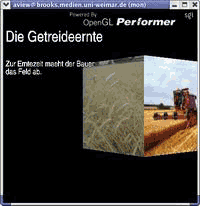
The program is structured as a set of scenes, each telling a part of the story about the windmill. The user can navigate through the set by using the input device. There are two main parts, the main part is a 3D-model of a windmill, by which the functionality of a windmill is shown. Here the user can interact with the windmill by blowing into the input device and turning the wheel at the socket to change the wind direction. This main part is embedded in a set of storyscenes where background information is given through pictures on a rotating cube.
The application is also run in a "Virtual Showcase" and can be experienced in stereoscopic 3D.
Input Device
The device features a smooth running windwheel at the top. On the socket are two buttons and a mouse wheel. Technically, the windmill is a wireless mechanical mouse with the photo sensor for relative x-axis measurement soldered out to read the windwheel rotation. The faster the wheel is turning due to the users puffing, the higher the values get.
The design of the device was chosen to be similar to regular wind toys used by young children.
